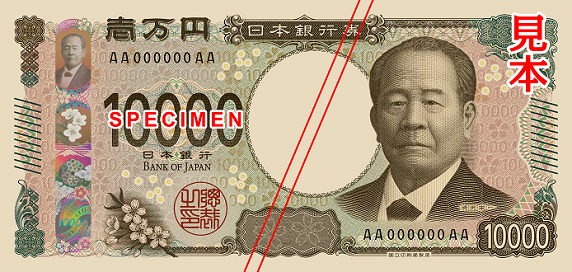
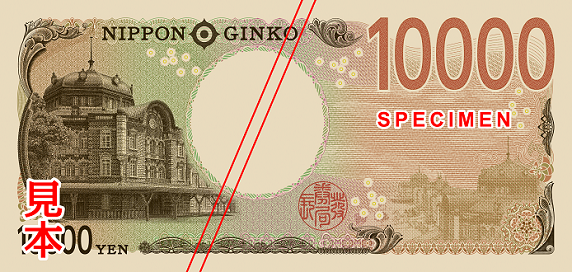
| Design | The front features Eiichi Shibusawa, who was involved in of the establishment of around 500 businesses and economic organizations during his lifetime and played an active role in the business world. The back depicts Tokyo Station (Marunouchi Station building), a historic structure (Important Cultural Property) commonly known as the “Red Brick Station.” |
|---|---|
| Size | 76 mm (height) × 160 mm (width), the same size as the current 10,000 yen note. |
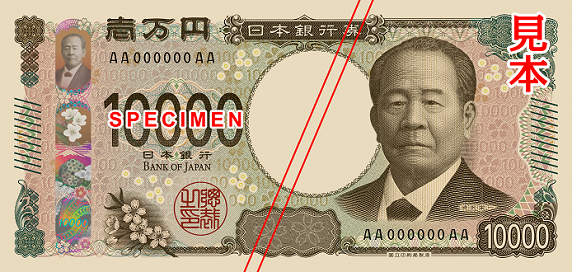
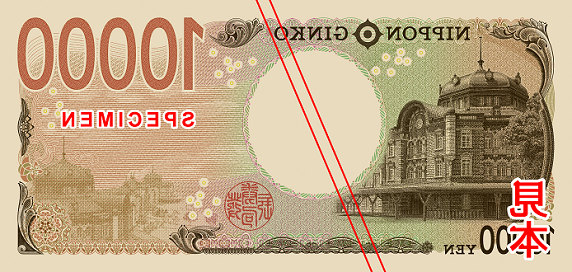










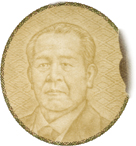
High-definition watermark
In addition to the current type of watermark, a high-definition watermark has been newly added. The portrait is surrounded by a continuous pattern composed of intricate lines.

Intaglio printing
The main designs on banknotes, including the portrait, are printed using the intaglio printing method. Specifically, for the denomination numerals and the text “日本銀行券” (Bank of Japan note), a technique known as intaglio printing is employed, where ink is applied thickly to create a greater relief.
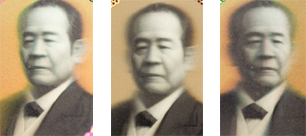
3D hologram
A stripe-type hologram is newly added. New cutting-edge technology is used, and it can be used to rotate the portrait in 3D.This technology has been adopted for the first time in banknotes in the world.
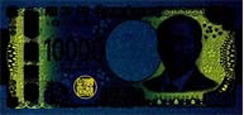

Luminescent ink
When ultraviolet light is shone, the seal on the front (the seal of the Governor of the Bank of Japan), and patterns on both sides become luminescent.
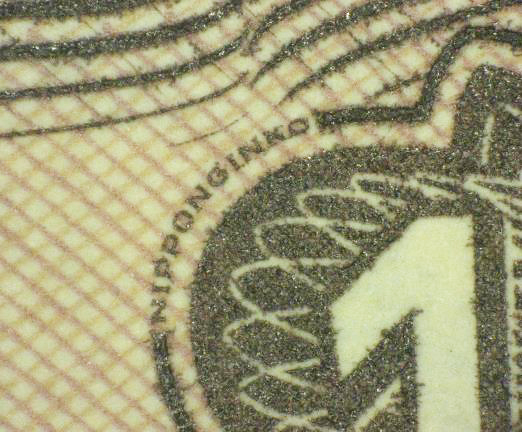
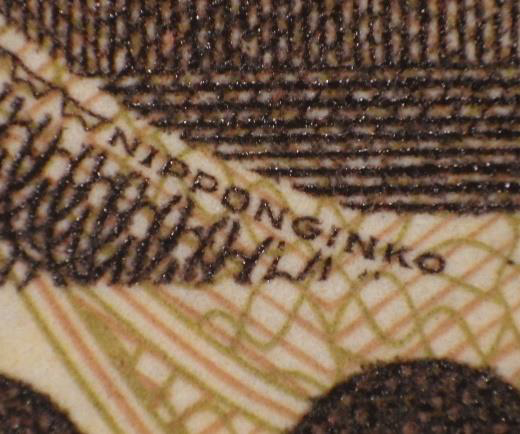
Microprinting
“NIPPONGINKO” is printed in microscript that cannot be reproduced with color photocopiers.
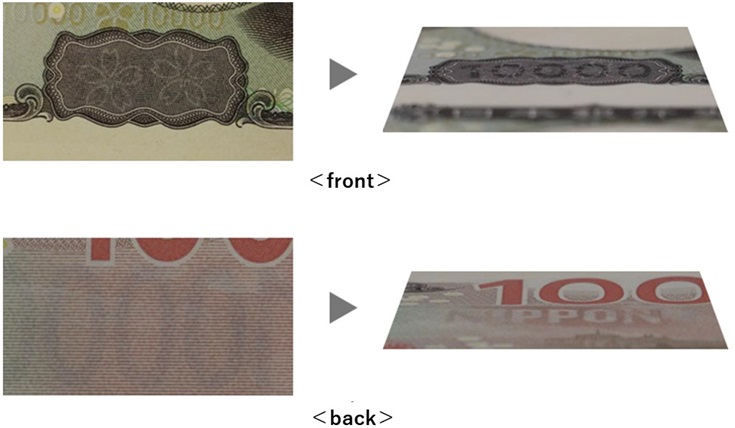
Latent image
By tilting, the face value numerals, such as “10000” or “5000” appear on the front side, while on the reverse side, the characters “NIPPON” appears.
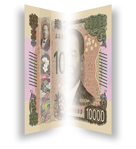
Pearl ink
When tilting, a pink-colored sheen emerges at the center of both the left and right ends of the banknote.
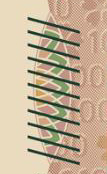
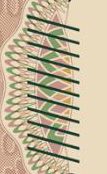
tactile marks
Tactile marks by intaglio printing with a textured feeling are employed to help the visually handicapped distinguish different notes with their fingers. The mark is placed at the center left and right on the front on the 10,000 yen note.
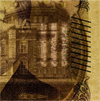
Watermark-bar-pattern
Watermarks in bar patterns are embedded in the paper. When seen against the light, 10,000 yen note has 3 bars.
-
- High-definition watermark
 In addition to the current type of watermark, a high-definition watermark has been newly added. The portrait is surrounded by a continuous pattern composed of intricate lines.
In addition to the current type of watermark, a high-definition watermark has been newly added. The portrait is surrounded by a continuous pattern composed of intricate lines.
-
- 3D hologram
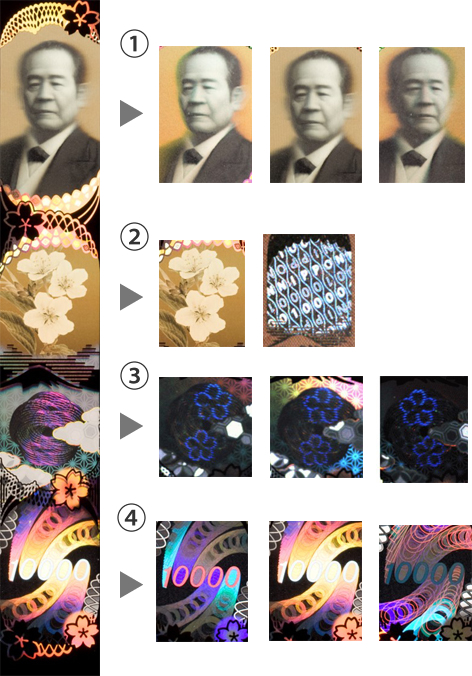 A stripe-type hologram is newly added. New cutting-edge technology is used, and it can be used to rotate the portrait in 3D.
A stripe-type hologram is newly added. New cutting-edge technology is used, and it can be used to rotate the portrait in 3D.
This technology has been adopted for the first time in banknotes in the world.
-
- Latent images

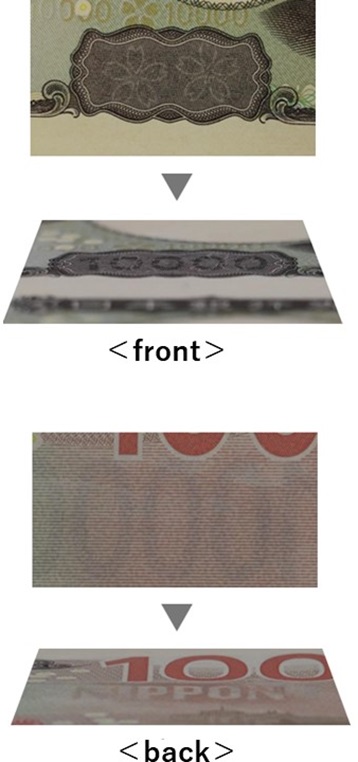 When tilting a note, the denomination “10000” appears on the front side, and “NIPPON” appears on the back side.
When tilting a note, the denomination “10000” appears on the front side, and “NIPPON” appears on the back side.
-
- Pearl ink
 Not visible from the front, but when tilting a note, a pink pattern emerges at the center of either end of the note.
Not visible from the front, but when tilting a note, a pink pattern emerges at the center of either end of the note.
-
- Microprinting

 “NIPPONGINKO” is printed in microscript that cannot be easily reproduced on color copy machines.
“NIPPONGINKO” is printed in microscript that cannot be easily reproduced on color copy machines.
-
- Intaglio printing
 The main designs on banknotes, including the portrait, are printed using the intaglio printing method. Specifically, for the denomination numerals and the text“日本銀行券” (Bank of Japan note), a technique known as intaglio printing is employed, where ink is applied thickly to create a greater relief.
The main designs on banknotes, including the portrait, are printed using the intaglio printing method. Specifically, for the denomination numerals and the text“日本銀行券” (Bank of Japan note), a technique known as intaglio printing is employed, where ink is applied thickly to create a greater relief.
-
- Tactile marks

 Tactile marks by intaglio printing with a textured feeling are employed to help the visually impaired individuals distinguish different notes with their fingers. The mark is placed at the center left and right on the front on the 10,000 yen note.
Tactile marks by intaglio printing with a textured feeling are employed to help the visually impaired individuals distinguish different notes with their fingers. The mark is placed at the center left and right on the front on the 10,000 yen note.
-
- Watermark-bar-pattern
 Watermarks in bar patterns are embedded in the paper. When seen against the light, 10,000 yen note has three bars.
Watermarks in bar patterns are embedded in the paper. When seen against the light, 10,000 yen note has three bars.
-
- Luminescent ink

 When ultraviolet light is shone on a note, the seal of the Governor of the Bank of Japan on the front side, and part of the background pattern on either side, become luminous.
When ultraviolet light is shone on a note, the seal of the Governor of the Bank of Japan on the front side, and part of the background pattern on either side, become luminous.
Design
-
- Changes in shapes and arrangements of tactile marks

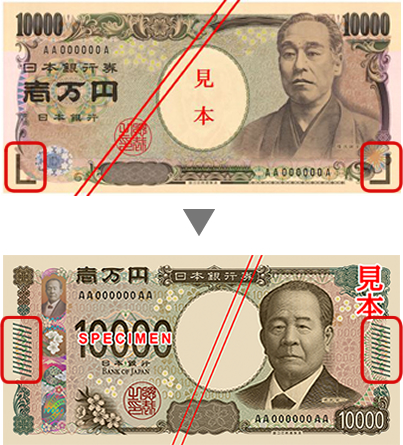 The shape of the tactile mark is conformed to 11 diagonal lines for excellent finger sensitivity. The marks are placed in a different position to make it easier to identify denominations.
The shape of the tactile mark is conformed to 11 diagonal lines for excellent finger sensitivity. The marks are placed in a different position to make it easier to identify denominations.
The mark is placed at the center left and right on the front on the 10,000 yen note.
-
- Enlarged numerals of face value
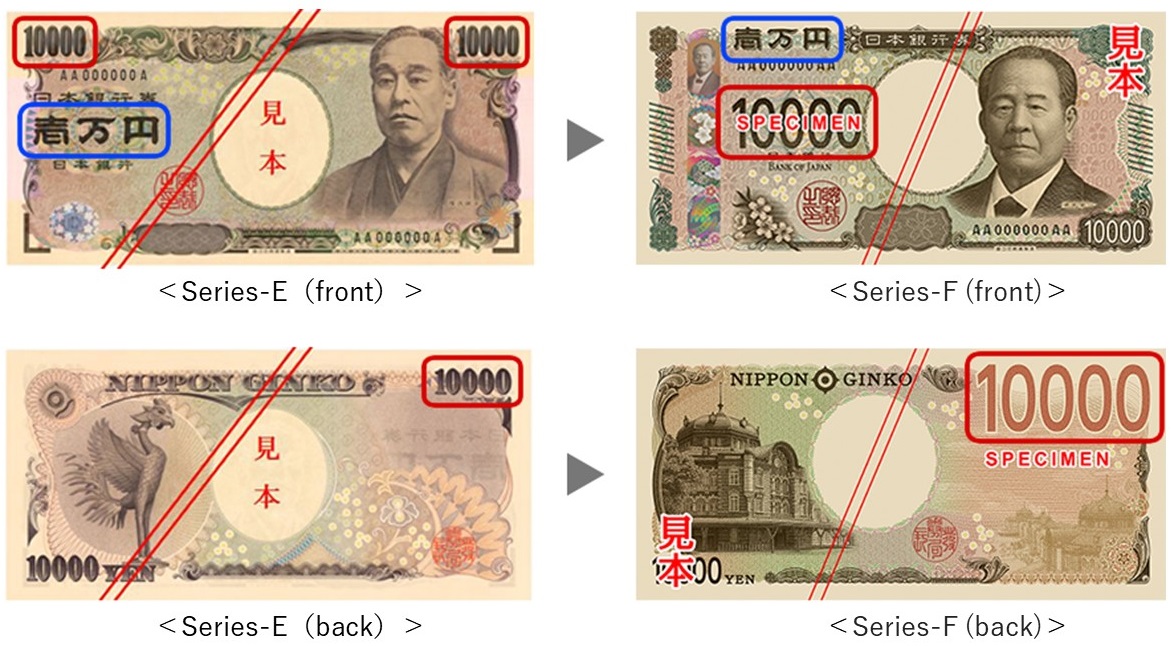
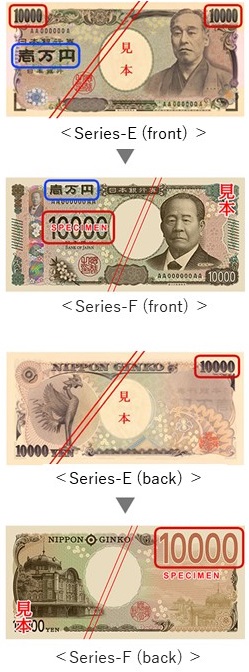 Arabic numerals, familiar to many people regardless of age or nationality, are used for face value numbers and have a larger font than that of current notes.
Arabic numerals, familiar to many people regardless of age or nationality, are used for face value numbers and have a larger font than that of current notes.

